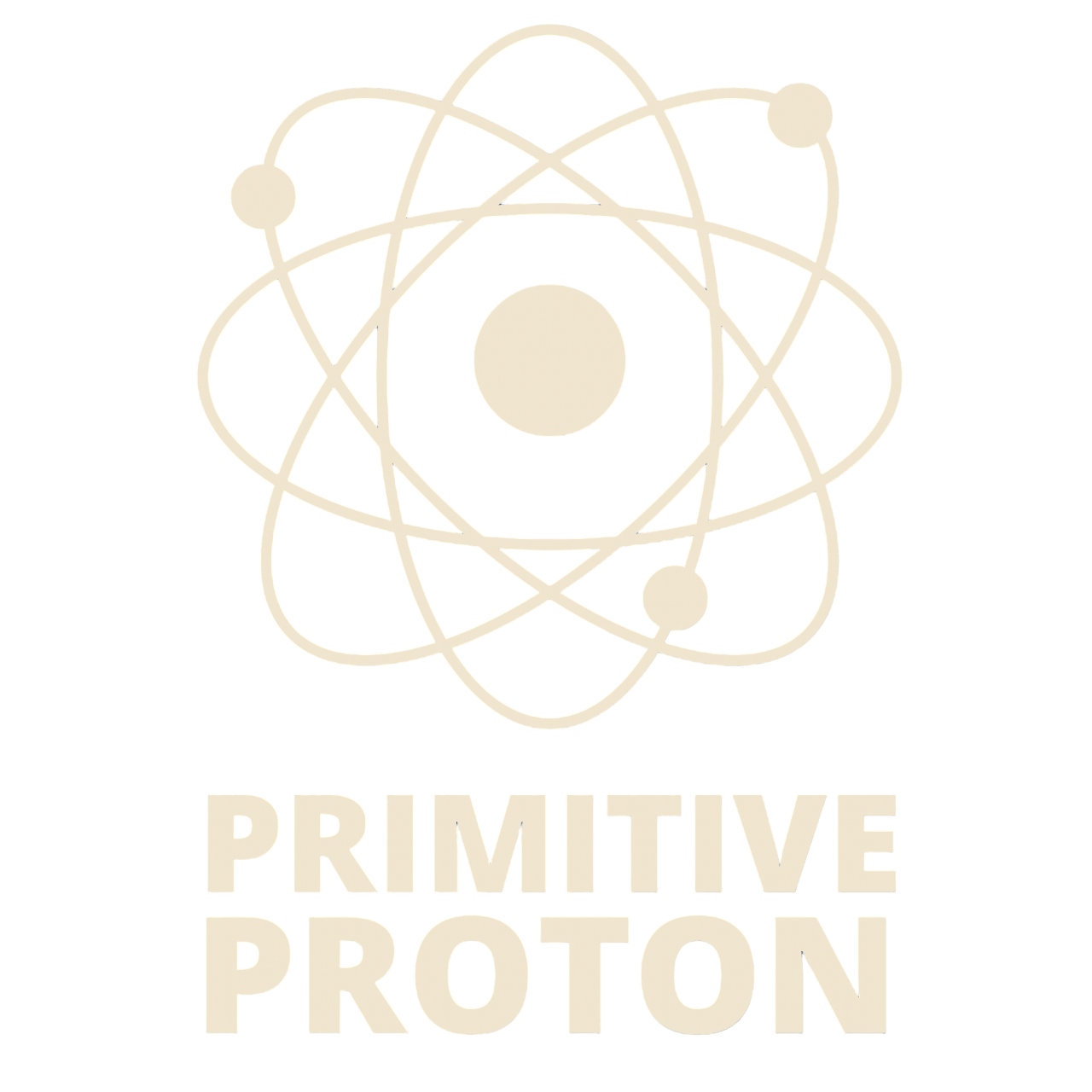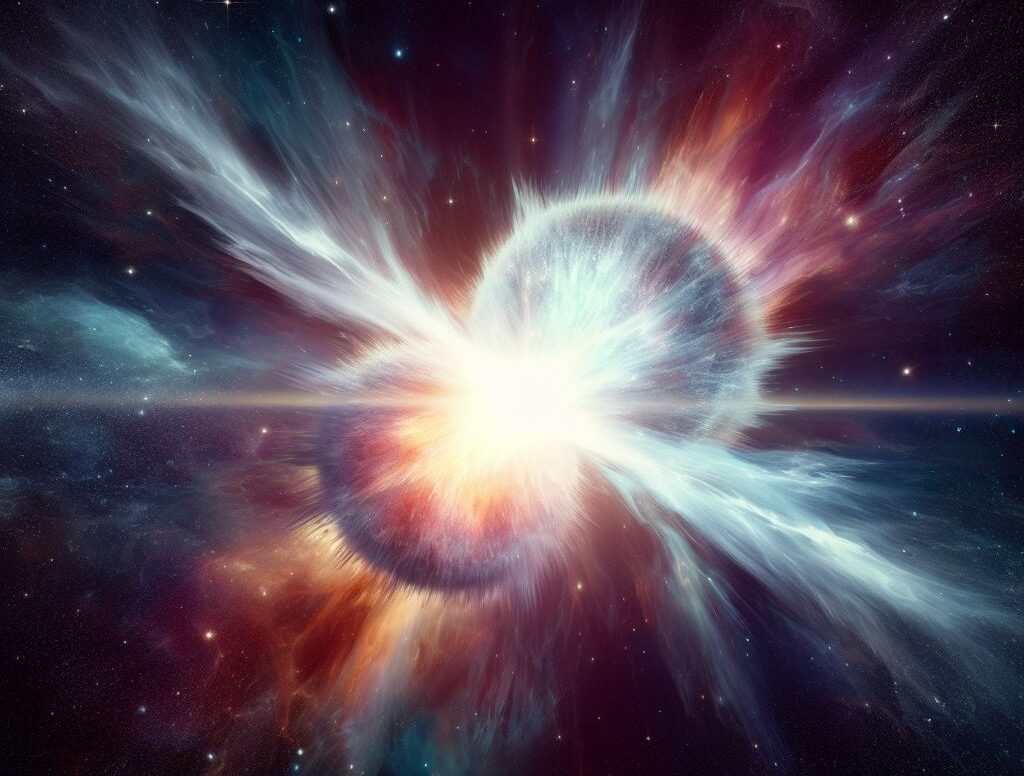A remarkable collaboration of space and ground-based telescopes has helped a team of scientists identify a gamma-ray burst and detect the element tellurium in the after-effects of the explosion. Tellurium is a very rare element on Earth and this discovery can help in gaining a deeper understanding of the origins of such elements in the Universe.
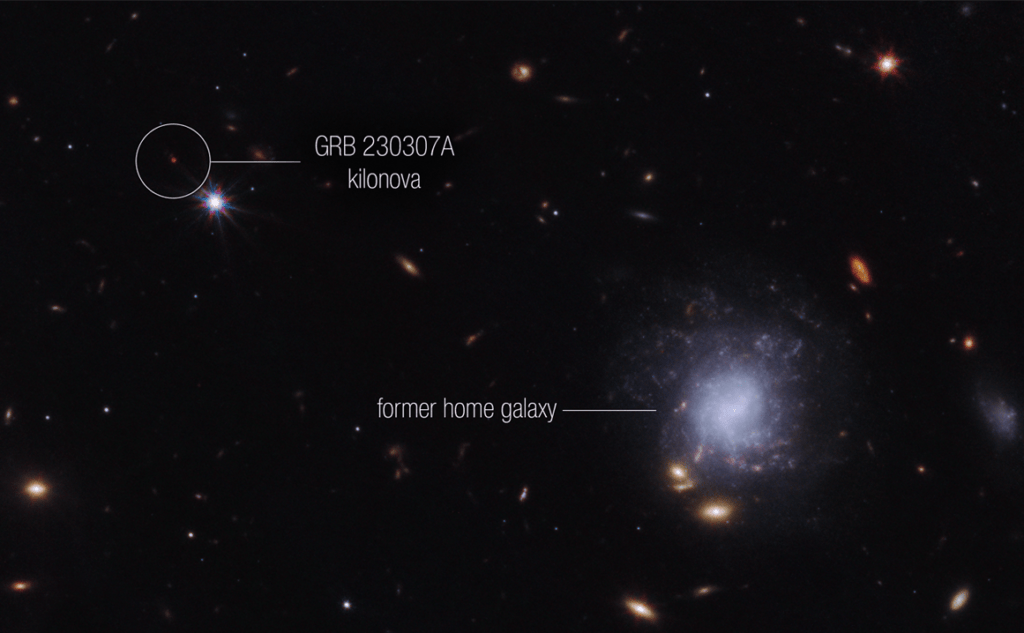
The Cosmic Landscape
Neutron stars are one of the densest known objects that are formed when an enormous star has exhausted its nuclear fusion process and eventually its core collapses, crushing every electron and proton into a neutron. For reference, a sugar cube of neutron star material would weigh 1 trillion kilograms on Earth.
When two neutron stars (or a neutron star and a black hole) collide, gamma-ray bursts (GRBs) are produced from the decay of radioactive elements such as platinum and gold formed in the debris from the merger. This burst of light is known as a kilonova.
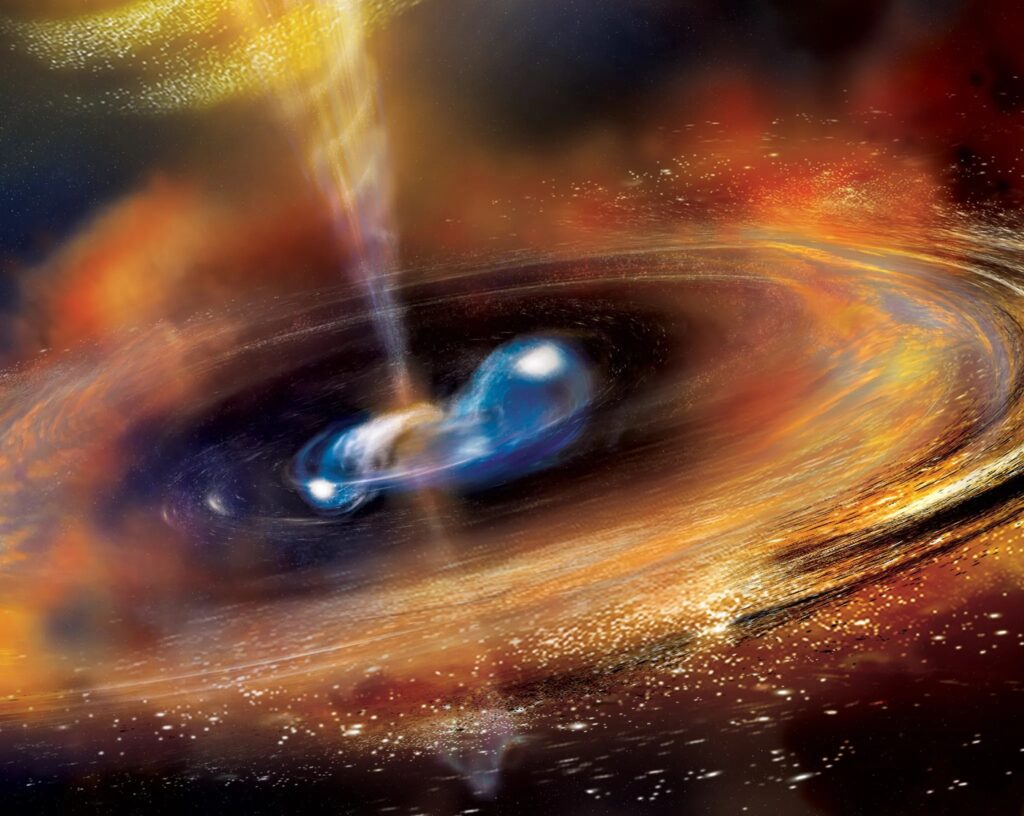
The James Webb Space Telescope (JWST) along with NASA’s Fermi Gamma-ray Space Telescope and NASA’s Neil Gehrels Swift Observatory observed an exceptionally bright gamma-ray burst, GRB 230307A which was a result of two neutron stars merging that generated the explosion.
GRB 230307A is the second brightest burst observed in over 50 years of observations. The light show lasted for about 200 seconds and was placed under the long-duration gamma-ray bursts category (lasting between 2 seconds to a few hundred seconds). On the contrary, the short-duration bursts last between a few milliseconds to 2 seconds.
Revelation of Tellurium
When scientists analyzed data from the JWST, they could find evidence of elements being produced across a wide range of atomic mass in the kilonova in GRB 230207A.
The spectral data as well as a kilonova model both demonstrate a distinct peak in the region of the spectrum associated with tellurium (area shaded in red in the below image). Scientists were also able to spot other rare, heavy transitional elements known as ‘lanthanides’. What makes this discovery groundbreaking is that it is the first time Webb has had a direct look at an individual element from a kilonova.
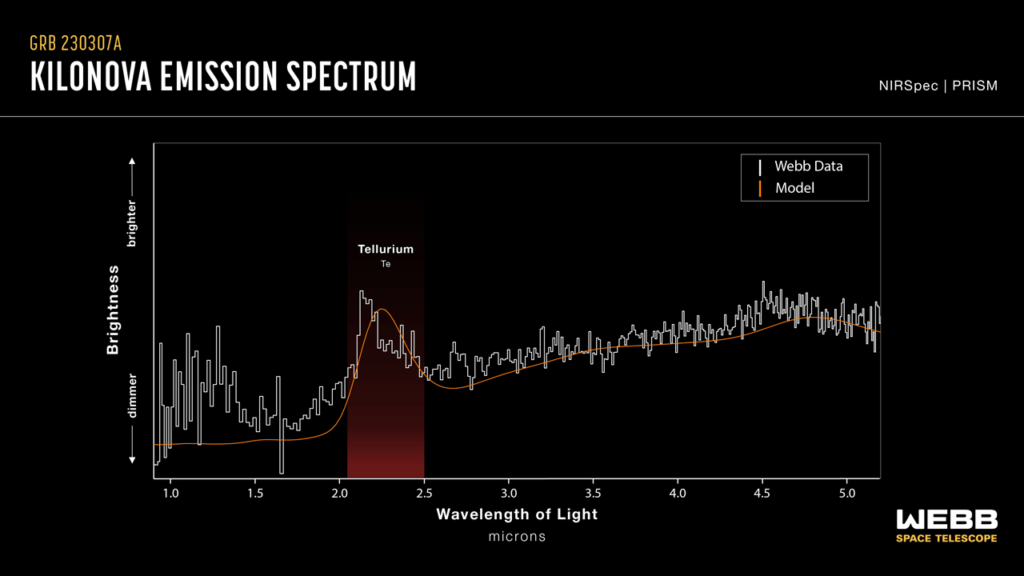
Tellurium, rarer than plutonium on Earth, contains the clue for the cosmic processes involved and causing for creation of such elements. A neighbor of Tellurium in the periodic table – Iodine, an ingredient for much of the biological process on Earth, has also a possible origin in the kilonova’s ejected material.
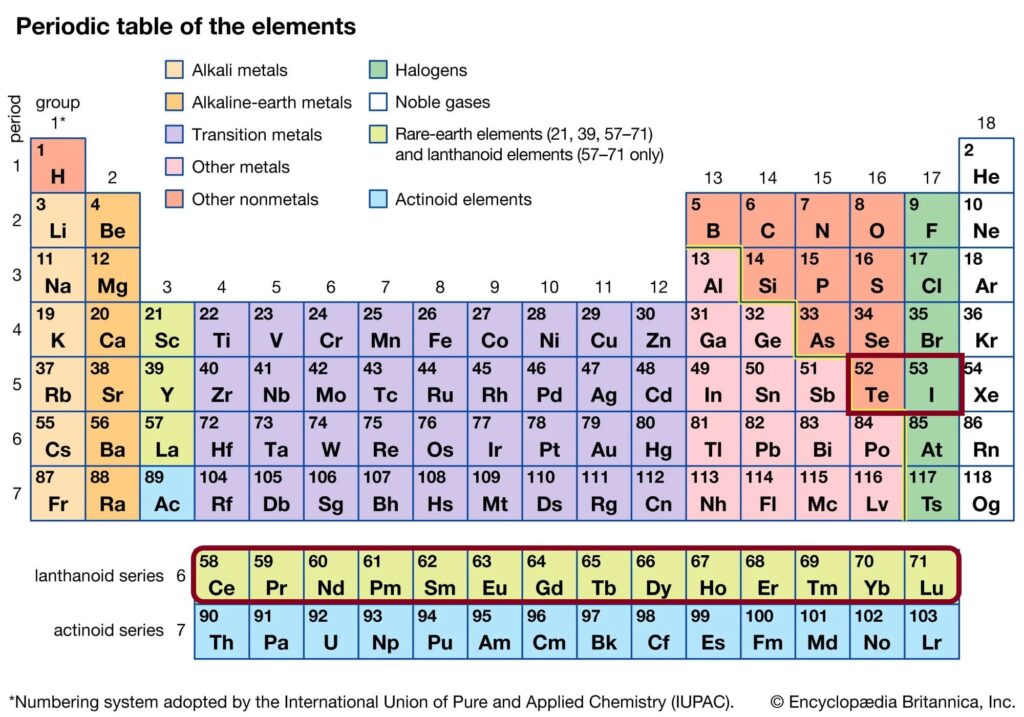
Scientists think that a single-celled microbe called the “Last Universal Common Ancestor (LUCA),” which started all life on Earth, might have used iodine. The creation of such elements in the explosion of such dense bodies might be consequential for the time when certain evolutionary channels become plausible.
JWST’s role and the Importance of Collaboration
GRB 230207A was first detected on 7th March 2023 by NASA’s Fermi Gamma-ray Space Telescope. With confirmed detections by other high-energy instruments as well, a thorough set of observations was performed by ground-based and space telescopes, including NASA’s Neil Gehrels Swift Observatory.
The ground-based campaign started imaging the kilonova 1.4 days after the burst. On the 11th day, the infrared observations revealed a transition from an early blue spectral slope to a much redder one. This transformation was highly similar to the expectations for a kilonova.
Soon after this detection, the scientists requested JWST’s observations, which began its operations on 5th April 2023 (28.4 days after the burst). The team received the second epoch of observations on 8th May 2023 (61 days after the burst).
The highly sensitive infrared capabilities of JWST were extremely helpful. Using its NIRCam (Near-Infrared Camera) and NIRSpec (Near-Infrared Spectrograph) instruments, scientists were able to pinpoint the location of the two neutron stars that collided – a spiral galaxy about 120,000 light-years away from the merger location.
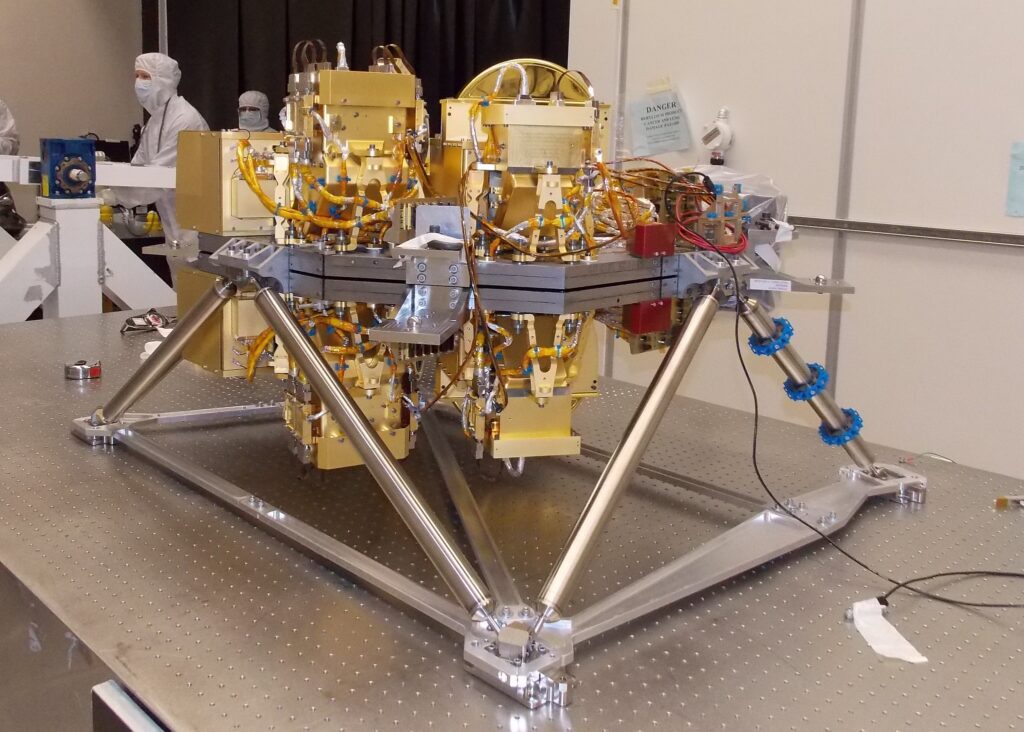
These neutron stars were once a part of the host galaxy, gravitationally bound with each other in a binary system. One of them exploded as a supernova and became a neutron star. The other star emulated its partner. They got kicked out of their home galaxy, still remaining as a binary system, and traveled approximately the diameter of our galaxy, the Milky Way, before finally merging a million years later.
Ben Gompertz, a co-author of the study at the University of Birmingham in the UK, is highly optimistic regarding developments in this field and hopes our understanding of the Universe will no longer be limited by pre-JWST constraints.
“Webb provides a phenomenal boost and may find even heavier elements. As we get more frequent observations, the models will improve and the spectrum may evolve more in time. Webb has certainly opened the door to do a lot more, and its abilities will be completely transformative for our understanding of the universe.”
– Ben Gompertz
Concluding Thoughts
The discovery is yet another stepping stone towards our quest to understand the Universe. In the vast expanse, where stars and galaxies whisper secrets, our instruments, including the James Webb Space Telescope unveils a cosmic epiphany. As we voyage deeper, tomorrow’s horizon gleams with promises – we will find our answers in the stardust!
Notes:
- Heavy element production in a compact object merger observed by JWST
https://doi.org/10.1038/s41586-023-06759-1 - Gamma-ray Bursts
https://imagine.gsfc.nasa.gov/science/objects/bursts1.html

Subscribe to Primitive Proton Newsletter
Sign up to keep up to date with the latest news and curated blogs in the world of space, science, and technology.
Your email is never shared with anyone. You can opt out anytime with a simple click!
WE PRIORITISE PRIVACY.
